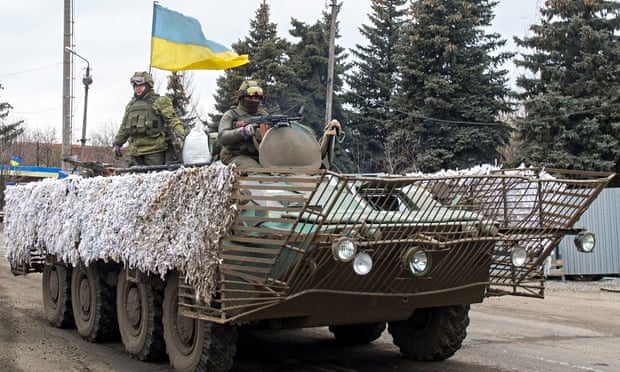By Kathryn Maureen Ryan
Impunity Watch Managing Editor
KIEV, Ukraine – According to the Office of the UN High Commissioner for Human Rights (OHCHR), the overall death toll in the recent conflict in the Ukraine now exceeds 5,358 people. An additional 12,235 have been wounded since mid-April of last year. “The rebel offensive continues and civilians are dying on a daily basis,” United Nations Secretary-General Ban Ki-moon said in a statement issued by his spokesperson. “Any further escalation will prove catastrophic for the 5.2 million people living in the midst of conflict in eastern Ukraine,” the high commissioner for Human Rights said.

Indiscriminate shelling has been reported in residential areas in government-controlled territories such as Debaltseve and Avdiivka and rebel-held cities such as Donetsk and Horlivka the United Nations High Commissioner for Human Rights Zeid Ra’ad Al Hussein said. “Bus stops and public transport, marketplaces, schools and kindergartens, hospitals and residential areas have become battlegrounds in the Donetsk and Luhansk regions of Ukraine — in clear breach of international humanitarian law which governs the conduct of armed conflicts,” the high commissioner said in a statement. Last, the most deadly single incident involving civilians occurred in the southeastern city of Mariupol when two attacks were carried out using multiple-launch rocket systems that killed least 31 people and injured 112 others, the United Nations said.
Despite mounting evidence the Russian government denies denies accusations that it has been sending troops and supplying the pro-Russian rebels. Russian President Vladimir Putin blames the current conflict in the Ukraine is the fault of the west, he told an Egyptian newspaper that Western countries had broken pledges not to expand NATO and forced countries to choose between them and Russia.
Putin’s comments come amid new hopes for a peace deal this Wednesday. German Chancellor Angela Merkel and French President Francois Hollande flew to Moscow on Friday to discuss proposals to end the fighting. The details of the proposed peace deal have not been released but the plan is believed to include a demilitarized zone of 50-70km (31-44 miles) around the current front lines of the conflict zone. Russian President Vladimir Putin and Ukrainian President Petro Poroshenko reportedly spoke on the phone on Sunday, they announced that a four-way summit could be held Minsk, if the details were agreed before Wednesday.
Chancellor Merkel is expected to brief United States President Barack Obama in Washington D.C. later on Monday on the peace plan as the United considers broadening its role in the region, including the possibility of sending weapons to the Ukrainian government. Some U.S. officials, as well as senior Republicans including Senator John McCain, argue that some form of military support is necessary. However, Chancellor Merkel said she could not “imagine any situation in which improved equipment for the Ukrainian army leads to President Putin being so impressed that he believes he will lose militarily.”
The current crisis in eastern Ukraine began in late February 2014 stemming from an initial internal political crisis and degrading violent clashes in parts of the country and has now reached full scale conflict in the eastern region of the country. Despite the Minsk cease-fire, the situation in Ukraine has deteriorated.
For more information please see
BBC News – Ukraine conflict: Vladimir Putin renews blame on West – 9 February 2015
BBC News – Ukraine crisis: Hollande and Merkel in Putin talks – 6 February 2015
The United Nations News Centre – UN chief ‘gravely concerned’ as civilian death toll from Ukraine conflict continues to rise – 5 February 2015
CNN International – Civilians increasingly under fire as Ukraine devastation grows – 3 February




